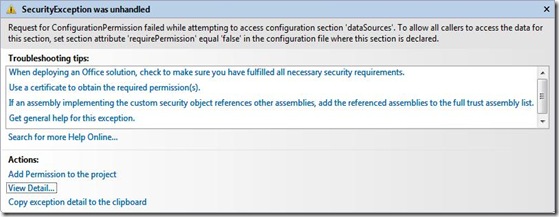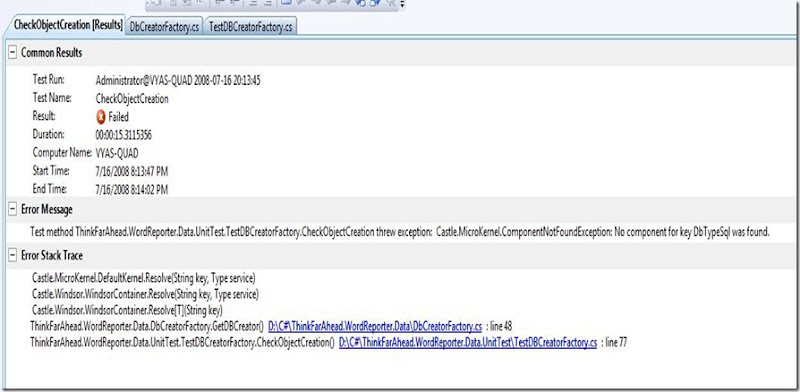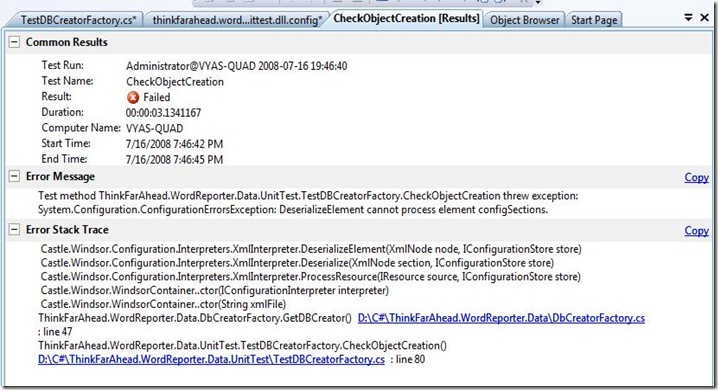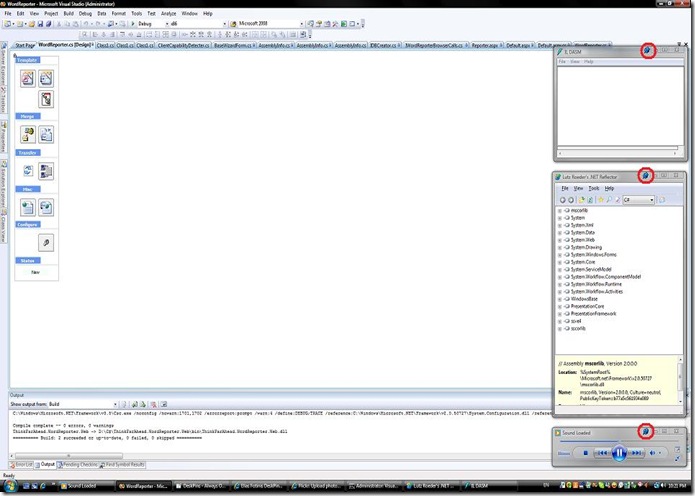If you're using Script# "Class Library in a Web Site" template, you need to make sure you're Script# Projects are located inside the "bin\Scripts" of the Web site. Yes, you heard me right. If you want a reusable class library or simply want to use the scripts generated on multiple Web projects on the same solution, use either "Class Library" or "Atlas Class Library".
I thought I had found a bug when I couldn't find the script files. Here's the complete analysis for the brave:
1) Select Script# "Class Library in a Web Site" template

2) Type the following it the default "Class1.cs" created
1 // Class1.cs
2 //
3
4 using System;
5 using System.DHTML;
6 using ScriptFX;
7 using ScriptFX.UI;
8
9 namespace ThinkFarAhead.WordReporter.TestBed.ScriptsForWeb
10 { 11
12 public class Class1
13 { 14 public void Greet()
15 { 16 Script.Alert("Hi!"); 17 }
18
19 public void Main()
20 { 21 new Class1().Greet();
22 }
23 }
24 }
3) Compile and search for the *.js files created. Hey, at least I was searching for it forever!
Here's my line of thinking went: If Script# is using MSBuild, the code for calling ssc.exe should be in the project.
49 <Import Project="$(ProgramFiles)\nStuff\ScriptSharp\v1.0\nStuff.ScriptSharp.targets" />
Well, it does import some MSBuild targets. Let's see what is it:
32 <ScriptCompilerTask
33 Sources="@(Compile)"
34 Resources="@(EmbeddedResource)"
35 References="@(ReferencePath)"
36 Defines="$(DefineConstants)"
37 OutputPath="$(OutputPath)"
38 ScriptPath="$(ScriptPath)"
39 LocaleSubFolders="$(LocaleSubFolders)"
40 ScriptName="$(ScriptName)"
41 Template="$(TemplateFile)"
42 CopyReferences="$(CopyReferences)"
43 CSharpAssembly="@(IntermediateAssembly)"
44 DocumentationFile="$(DocumentationFile)"
45 SuppressDocumentation="$(SuppressDocumentation)">
46 <Output TaskParameter="DebugScriptFile" ItemName="DebugScriptFile" />
47 <Output TaskParameter="ReleaseScriptFile" ItemName="ReleaseScriptFile" />
48 </ScriptCompilerTask>
Hm... it seems to be putting the scripts at $(ScriptPath). Let's see what's the path during compilation:
49 <!-- Added by Vyas to know where Script# is keeping my files-->
50 <Warning Text="Script Folder: $(ScriptPath)"/>
The project template is showing a value for $(ScriptPath) and I'm sure the compile-time warning added would confirm it
22 <ScriptPath>..\..\..\App_Scripts\</ScriptPath>
Here's the compiler output:
------ Build started: Project: ThinkFarAhead.WordReporter.Web.Scripts, Configuration: Debug Any CPU ------
C:\Windows\Microsoft.NET\Framework\v3.5\Csc.exe /noconfig /nowarn:0028,1591,1701,1702 /nostdlib+ /errorreport:prompt /warn:4 /doc:..\ThinkFarAhead.WordReporter.Web.Scripts.xml /define:DEBUG /reference:"C:\Program Files (x86)\nStuff\ScriptSharp\v1.0\Framework\sscorlib.dll" /reference:"C:\Program Files (x86)\nStuff\ScriptSharp\v1.0\Framework\ssfx.Core.dll" /reference:"C:\Program Files (x86)\nStuff\ScriptSharp\v1.0\Framework\ssfx.UI.Forms.dll" /debug- /optimize+ /out:obj\Debug\ThinkFarAhead.WordReporter.Web.Scripts.dll /target:library Properties\AssemblyInfo.cs ClientCapabilityDetecter.cs
Compile complete -- 0 errors, 0 warnings
C:\Program Files (x86)\nStuff\ScriptSharp\v1.0\nStuff.ScriptSharp.targets : warning : Script Folder: ..\..\App_Scripts\
Done building project "ThinkFarAhead.WordReporter.Web.Scripts.csproj".
I would have tought it should put it inside the project folder! It's dereferencing it from the project folder and put it on the root for me. Project folder: D:\C#\ , Script output folder: D:\App_Scripts.
I had looked at the samples before and it's putting the scripts correctly on the App_Scripts folder. Closer scrutiny this time reveals Nikhi's put the Script Projects "inside" the Web project itself at "bin\Scripts"! No wonder "..\..\..\App_Scripts" works for him.

Oh yes, I'm kicking myself for not figuring this one out much earlier!










